Invoices for Purchase Orders can be created by either the Vendor or the Client. To learn how to create an Invoice for a Purchase Order as a Client, review this other article. To learn how to create an Invoice for a Purchase Order as a Vendor, continue reading.
First, log in and navigate to the Invoices section in Liquid. Note that if you haven’t added a payout account, you will be asked to do Finance Setup before sending the Invoice so that it can be paid correctly by your Client.
Creating Invoices for Purchase Orders by Vendors
Start by logging in to Liquid.
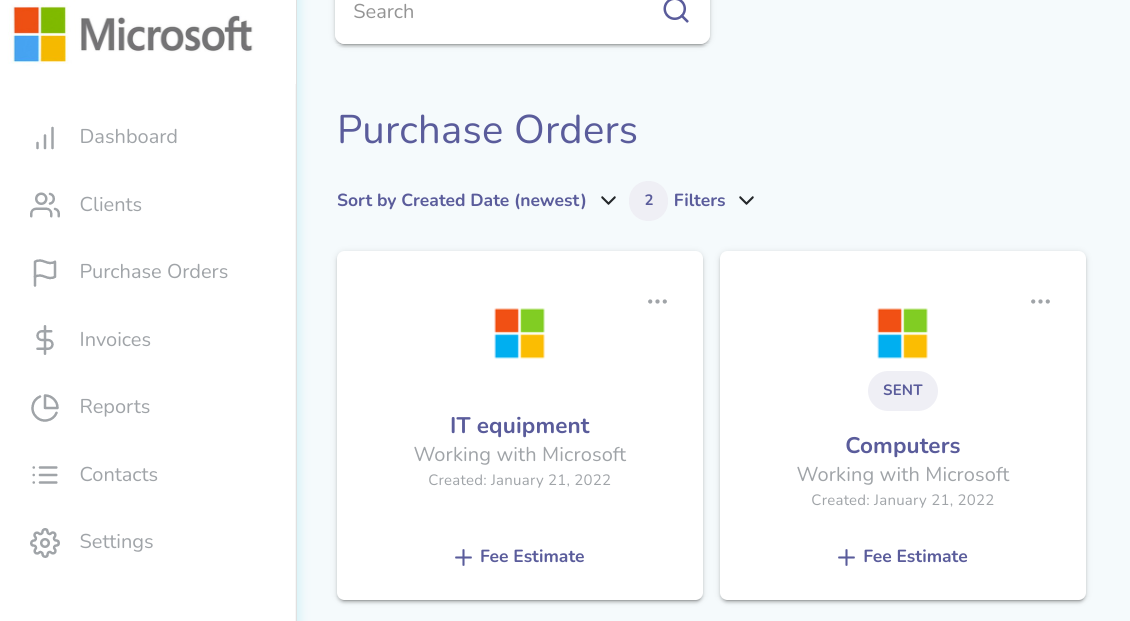
- Once you are logged in, go to Purchase Orders on the left side.
- Select your Purchase Work Orders.
- At the top of the Work Orders, click on Here are actions you can take for this Purchase Order.
- Press the + Invoice button.
- A draft invoice will be generated based on the agreed-to terms of the Purchase Orders.
- If needed, you can add additional line items to account for additional pre-agreed items, or you can delete the auto-generated line items and create your own.
- Note that using the auto-generated line items will allow the system to mark your Invoice as matching your Purchase Order. If you have added additional items or deleted the auto-generated items and recreated them, your Invoice may be marked with a warning that the Invoice does not match or cannot be matched. This warning will not prevent you from sending your Invoice, nor will it prevent your Clients from paying your Invoice.
- If you have any adjustments to make, add a Description and Price for the adjustment. If it's tax, check the box Is this tax? Note that if Adjustments are added, if they are declared Tax they will not be counted against the original PO for matching purposes.
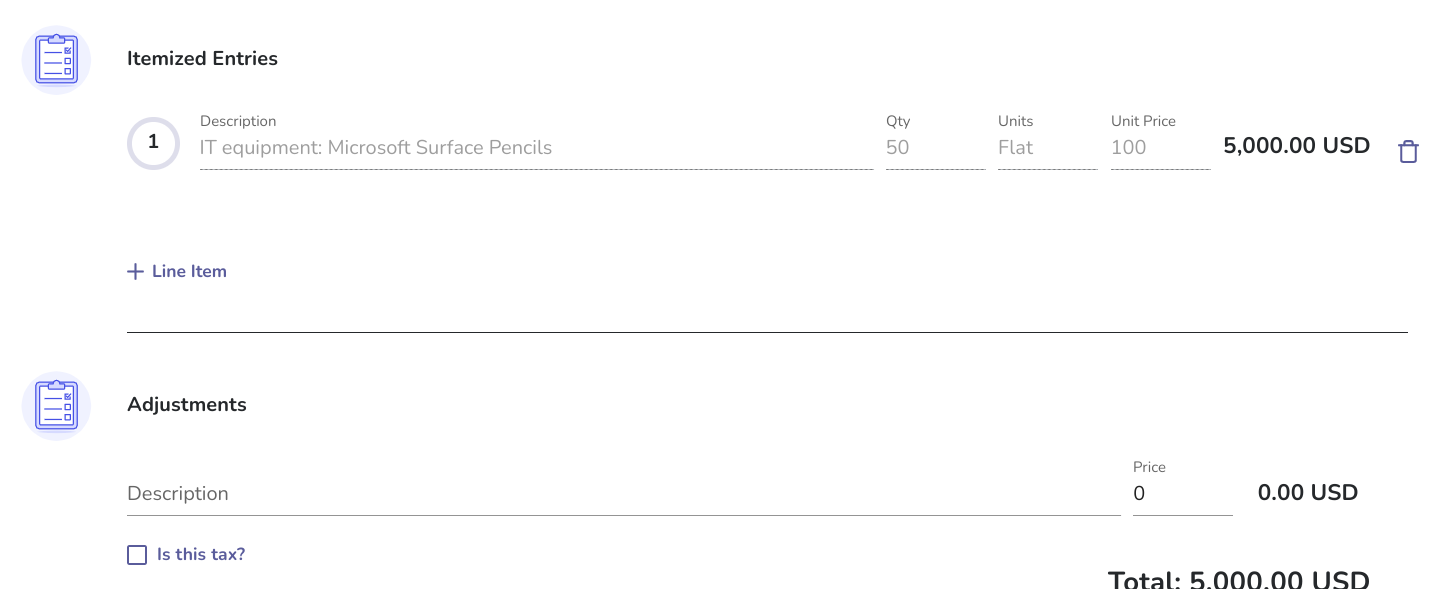
- The Invoice total will automatically be calculated and will be shown in the local currency.
- If you’d like, you can also enter Invoice Notes and/or an Invoice Footer. These fields are optional when sending an invoice to an existing Client using Liquid, but are required when sending an invoice via email (typically to a Client who is not a Liquid user).
- Press Send in the bottom right corner to send the Invoice to your Client.
The invoice will then be sent to your Client, who can then pay the invoice. Note that once an Invoice is created in a currency, it can’t be changed to another.
Uploading Invoices for Purchase Orders by Vendors
Start by logging in to Liquid.
- Once you are logged in, go to Invoices on the left side.
- Press the + Invoice button.
- You will be prompted to select a Client.
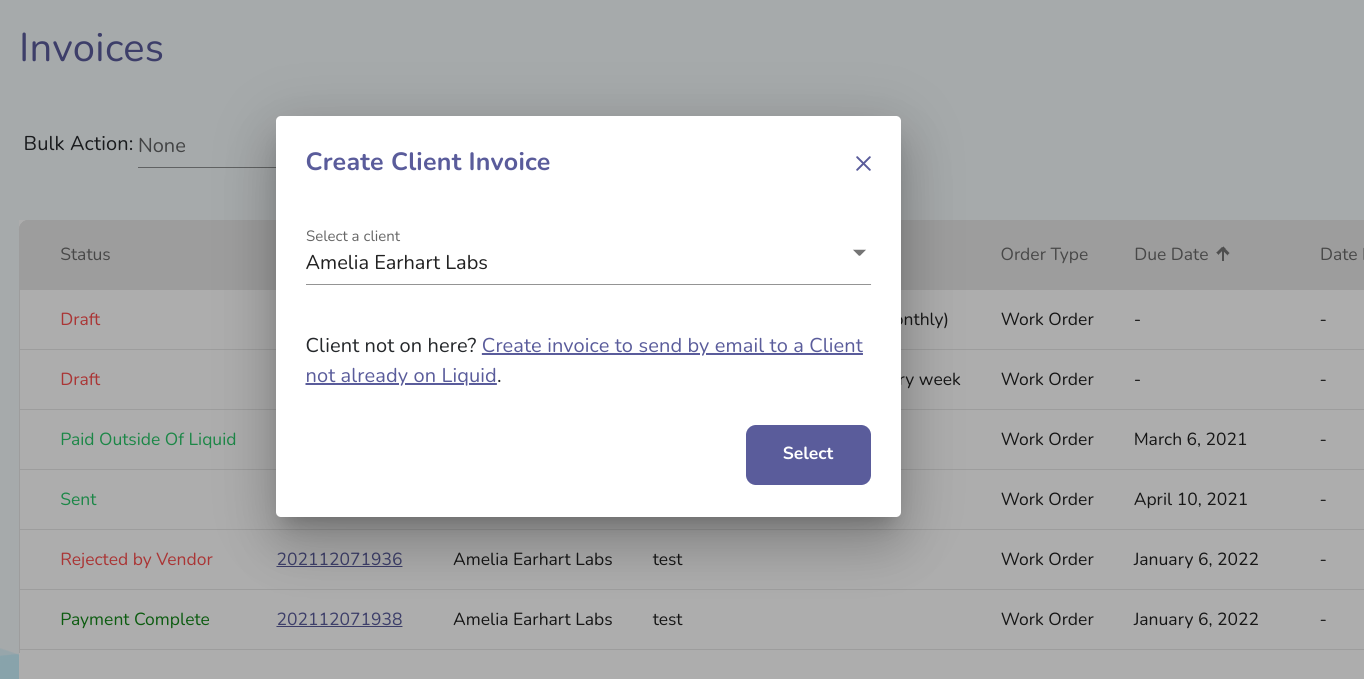
- Then you will be prompted to select Purchase Order or Work Order. Select Purchase Order.
- Next, you will be prompted to select a Purchase Order. Clicking Create the invoice without it to get a blank invoice creation form with your name and your Client’s name pre-filled. In addition, the payment terms will be pre-filled. Contact your Client if you’d like to modify payment terms, as the Client will need to make that change.
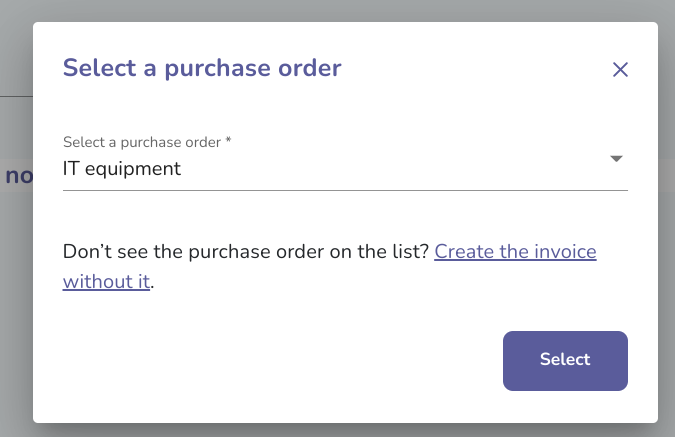
- Press the Upload button at the bottom left of the draft invoice. The draft invoice will then be discarded (you will have to confirm discarding the invoice), and then you will be navigated to a window to help you upload your Invoice.
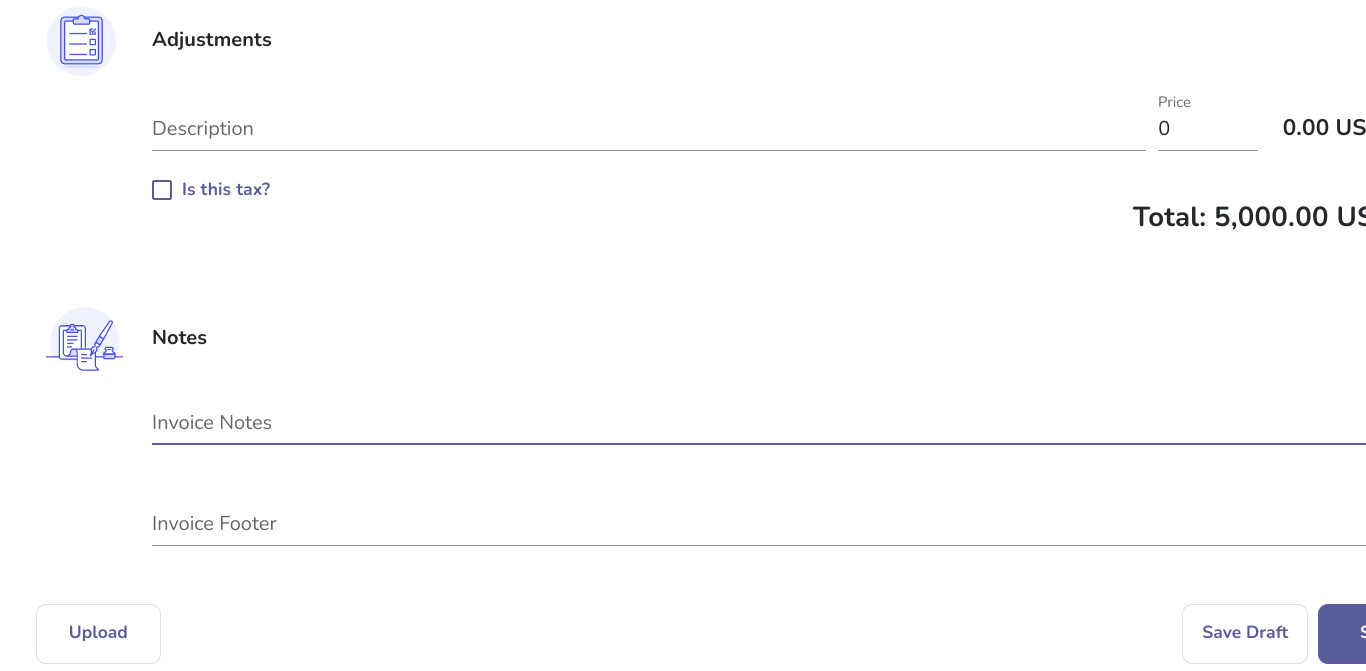
- Upload the file (acceptable file types are PDF, DOC, DOCX, or image files with a maximum size of 32MB).
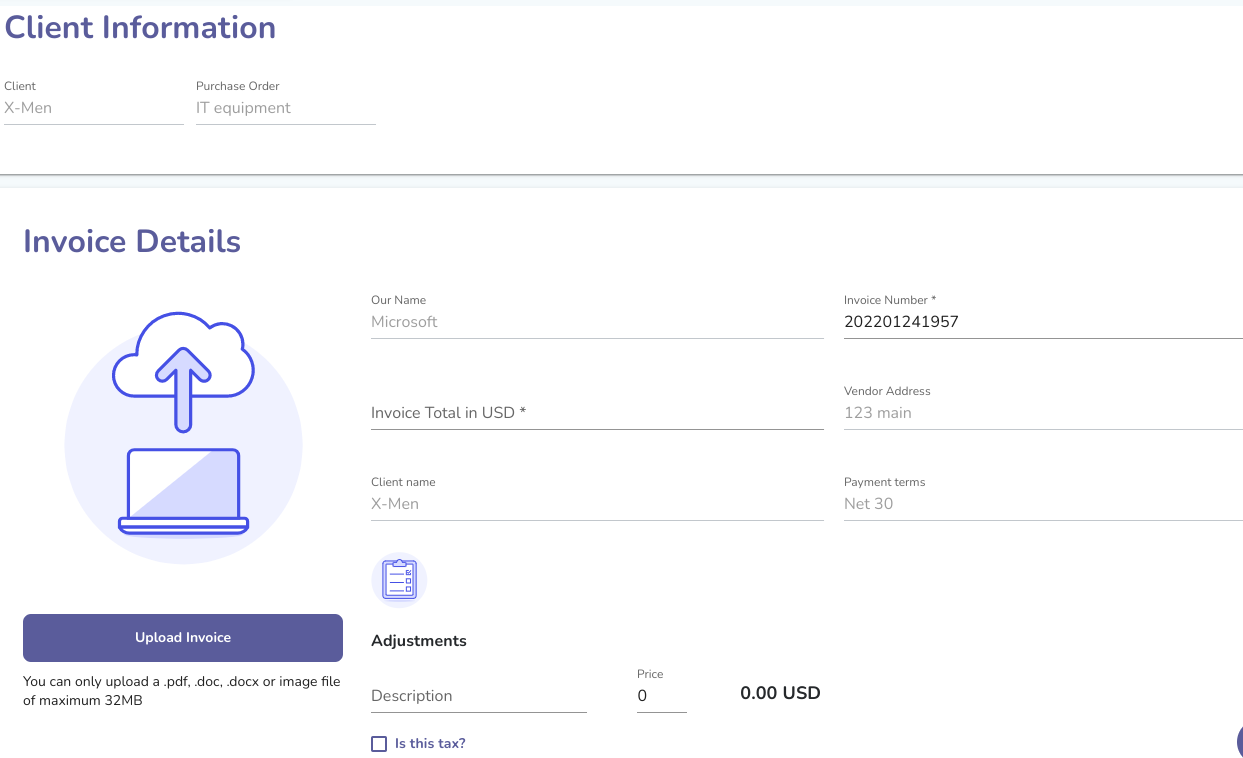
- Then, enter the invoice details — Invoice number and Invoice total (total amount invoiced in the local currency). An invoice number will be pre-populated, but you should adjust this manually to match the actual invoice number from the invoice.
- If you have any adjustments to make, add a Description and Price for the adjustment. If it's tax, check the box Is this tax? Note that if Adjustments are added, if they are declared Tax they will not be counted against the original PO for matching purposes.
- Press Submit Invoice to complete the Invoice upload.
The invoice will then be sent to your Client, who can then pay the invoice.
Create Invoices in USD without Purchase Orders via Invoices Page
While we highly recommend creating Invoices from Purchase Orders, you can invoice your clients without Purchase Orders. We recommend you ask your Client for approval to send invoices this way before doing so.
Start by logging into Liquid.
- Once you are logged in, go to Invoices on the left side.
- Press the + Invoice button.
- You will be prompted to select a Client.
- Then you will be prompted to select Purchase Order or Work Order. Select Purchase Order.
- Next, you will be prompted to select a Purchase Orders. Click Create the invoice without it to get a blank invoice creation form with your name and your Client’s name pre-filled.
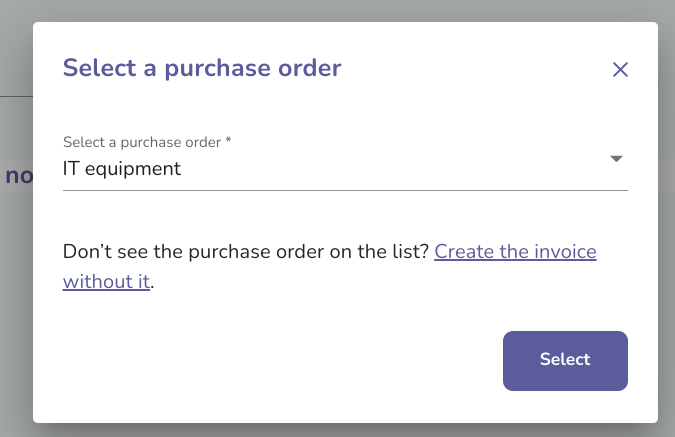
- The payment terms will be pre-filled. Contact your Client if you’d like to modify payment terms, as the Client will need to make that change. If you want to Upload an Invoice without a Purchase Order, press the Upload button at the bottom left.
- Make sure to add a Description, Quantity, Units, and the Unit Price. Each total line item will be calculated automatically and will be presented in the local currency.
- Add additional line items as appropriate. The total invoice amount will be calculated automatically.
- If you have any adjustments to make, add a Description and Price for the adjustment. If it's tax, check the box Is this tax? Note that if Adjustments are added, if they are declared Tax they will not be counted against the original PO for matching purposes.
- If desired, add Invoice Notes and/or an Invoice Footer. When sending invoices without Purchase Orders, it’s good practice to add detailed information about the Invoice in the Notes section.
- Note that by creating your Invoice without a Purchase Orders, the Invoice will be marked with a warning that the Invoice cannot be matched. This warning will not prevent you from sending your Invoice, nor will it prevent your Clients from paying your Invoice.
- Press Send to send the Invoice to your Client.
The invoice will then be sent to your Client, who can then pay the invoice. Note that once an Invoice is created in a currency, it can’t be changed to another.
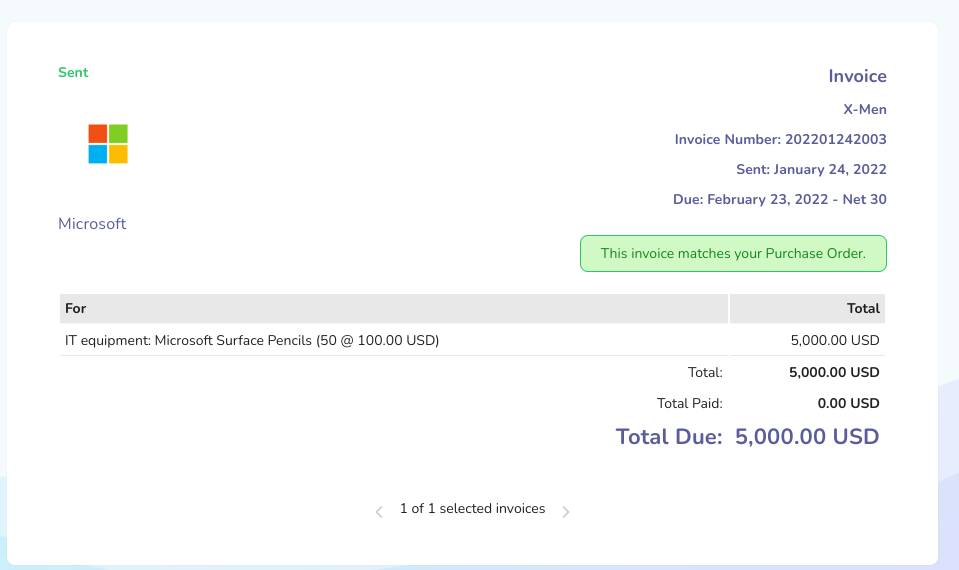
If you have selected to be paid in your local currency, an estimated USD amount will be shown on the sent invoice, along with the FX rate. At the time the payment is made, the USD amount will be locked given the invoice amount in local currency and the FX rate at that time.
